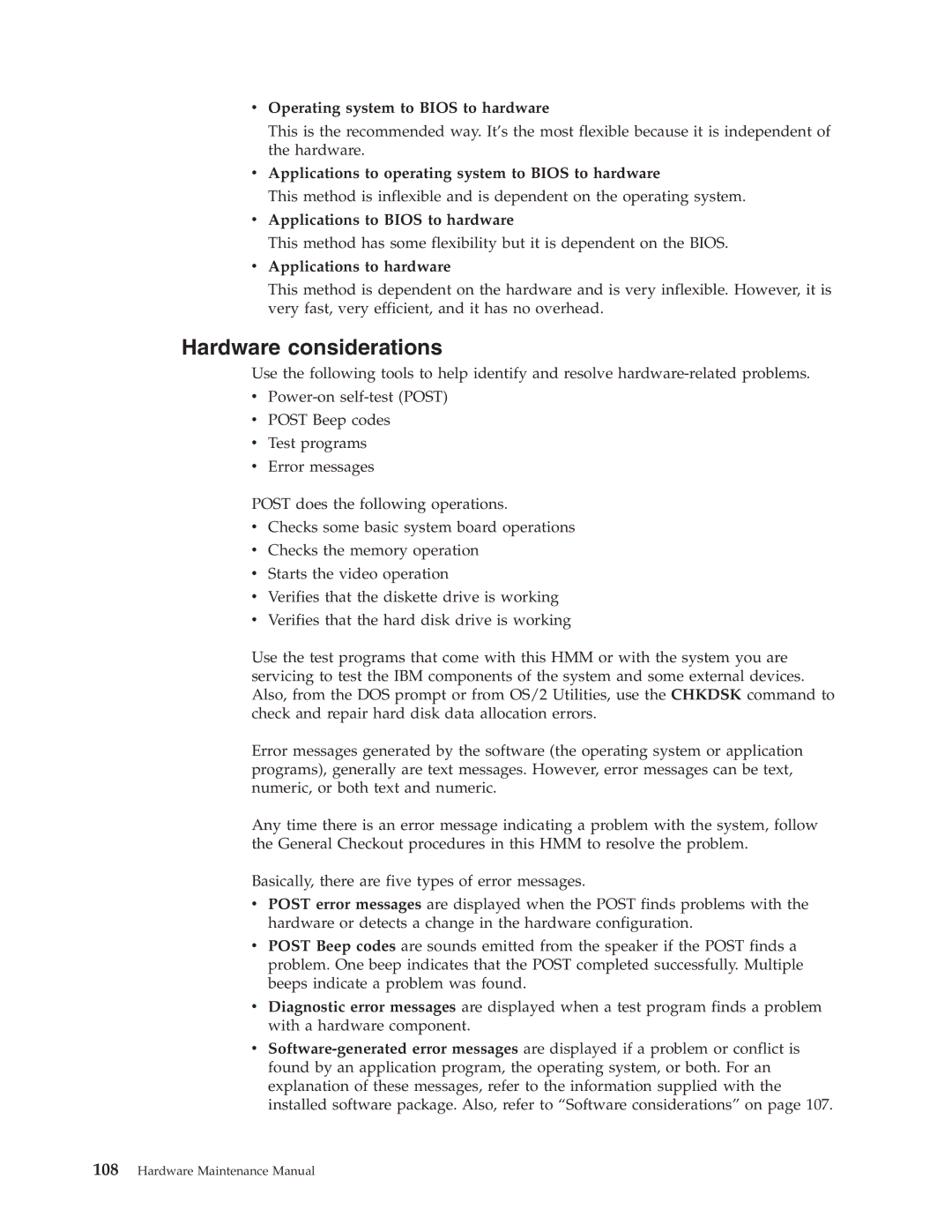vOperating system to BIOS to hardware
This is the recommended way. It’s the most flexible because it is independent of the hardware.
vApplications to operating system to BIOS to hardware
This method is inflexible and is dependent on the operating system.
vApplications to BIOS to hardware
This method has some flexibility but it is dependent on the BIOS.
vApplications to hardware
This method is dependent on the hardware and is very inflexible. However, it is very fast, very efficient, and it has no overhead.
Hardware considerations
Use the following tools to help identify and resolve
v
vPOST Beep codes
vTest programs
vError messages
POST does the following operations.
vChecks some basic system board operations
vChecks the memory operation
vStarts the video operation
vVerifies that the diskette drive is working
vVerifies that the hard disk drive is working
Use the test programs that come with this HMM or with the system you are servicing to test the IBM components of the system and some external devices. Also, from the DOS prompt or from OS/2 Utilities, use the CHKDSK command to check and repair hard disk data allocation errors.
Error messages generated by the software (the operating system or application programs), generally are text messages. However, error messages can be text, numeric, or both text and numeric.
Any time there is an error message indicating a problem with the system, follow the General Checkout procedures in this HMM to resolve the problem.
Basically, there are five types of error messages.
vPOST error messages are displayed when the POST finds problems with the hardware or detects a change in the hardware configuration.
vPOST Beep codes are sounds emitted from the speaker if the POST finds a problem. One beep indicates that the POST completed successfully. Multiple beeps indicate a problem was found.
vDiagnostic error messages are displayed when a test program finds a problem with a hardware component.
v
